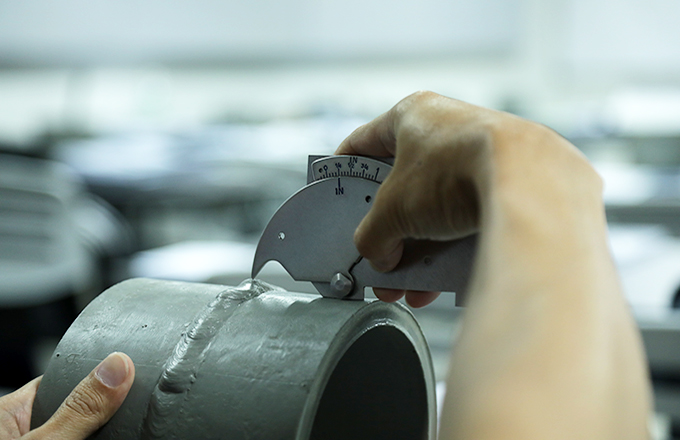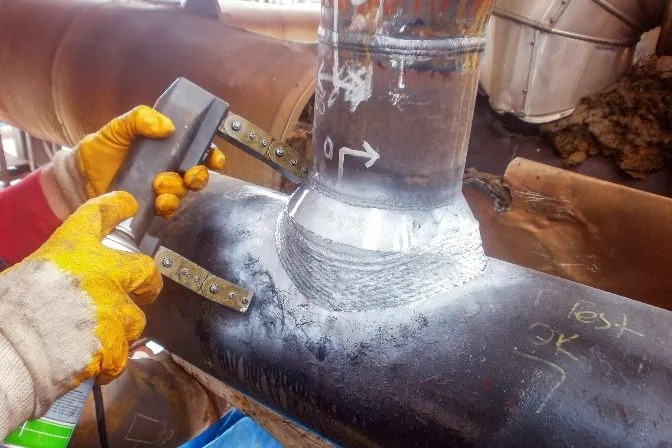Checking Out the Basics of Welding Examination: A Comprehensive Examination of Procedures, Tools, and the Importance of Quality Assurance in Welding Industries
Welding inspection serves as a keystone in the upkeep of security and architectural honesty throughout different sectors. Recognizing the ramifications of these techniques raises vital concerns concerning their performance and the future instructions of top quality assurance in welding.
Relevance of Welding Inspection
Welding examination plays a vital role in making certain the honesty and safety and security of welded frameworks. It acts as an organized strategy to reviewing weld top quality, determining potential flaws, and making sure compliance with well-known criteria and specifications. The relevance of welding assessment expands past simple adherence to policies; it is pivotal in securing human lives and shielding investments in infrastructure.
Malfunctioning welds can lead to disastrous failings, resulting in considerable financial losses, injury, or death. Rigorous assessment processes are crucial to discover issues such as insufficient infiltration, porosity, or cracks prior to they escalate into essential failures. Furthermore, reliable welding evaluation adds to the overall performance and long life of structures, making sure that they can hold up against the conditions for which they were created.
Moreover, the implementation of welding assessment cultivates a culture of high quality and liability within the welding sector. By focusing on evaluation, companies show their dedication to quality, thereby improving their credibility and competitiveness in the market. Eventually, welding examination is not just a step-by-step action yet a fundamental component of engineering integrity and safety assurance, vital for the effective execution of welding projects across various fields.
Trick Inspection Processes
A thorough strategy to welding inspection involves numerous crucial processes that are essential for ensuring weld top quality and architectural stability. The first critical procedure is visual examination, which enables inspectors to recognize surface defects such as fractures, porosity, and improper grain appearance. This method works as a preliminary evaluation to make certain that the weld satisfies defined standards.

In addition, destructive screening might be performed on sample welds to assess their mechanical homes and efficiency under stress. This procedure entails impact, exhaustion, and tensile testing to verify that the weld can stand up to operational conditions.
Lastly, documents and coverage are vital parts of the assessment process. Maintaining exact records of evaluations, observations, and examination results assists guarantee conformity with market standards and facilitates constant enhancement in welding techniques. Collectively, these key procedures create the foundation of effective welding examination and quality control.
Tools for Weld Analysis
Many tools are necessary for efficient weld analysis, each made to evaluate various elements of weld top quality and performance. Amongst the most extensively utilized are aesthetic evaluation devices, consisting of magnifying glasses and borescopes, which allow inspectors to determine surface area problems such as cracks, porosity, and incorrect blend.
Furthermore, ultrasonic testing (UT) tools is important for detecting interior imperfections. This tool utilizes high-frequency sound waves to disclose gaps within the weld, making certain the integrity of the material. Radiographic screening (RT) devices, which make use of X-rays or gamma rays, likewise give insight right into the inner framework of welds, permitting the identification of gaps or inclusions.
For exact dimensions, calipers and determines play a significant role in establishing weld measurements and ensuring adherence to defined resistances. Firmness testers assess the mechanical residential properties of the weld, ensuring it meets moved here performance standards.

Strategies for Evaluating Quality
How can the high quality of welds be accurately analyzed? A variety of strategies are utilized to review weld integrity and make certain adherence to specified requirements. Aesthetic inspection useful link is the most fundamental technique, permitting inspectors to determine surface area defects such as fractures, porosity, or damaging. This non-destructive strategy offers as a first assessment before even more advanced techniques are used.
Ultrasonic testing (UT) is another popular method that utilizes high-frequency acoustic waves to detect internal defects within the weld. Houston Welding Inspection. This technique supplies a thorough sight of the weld's integrity without compromising its structural integrity. Additionally, radiographic testing (RT) employs X-rays or gamma rays to disclose inner issues, supplying thorough understandings right into weld high quality
Magnetic fragment testing (MT) works for discovering surface and near-surface gaps in ferromagnetic materials, utilizing electromagnetic fields and tinted particles to highlight defects. Dye penetrant screening (PT) can be utilized to discover surface-breaking defects by using a dye that seeps right into fractures and is subsequently disclosed.
Compliance With Market Standards
Conformity with market standards is crucial for making certain the high quality and safety of bonded structures. These standards, developed by organizations such as the American Welding Culture (AWS) and the American National Requirement Institute (ANSI), supply guidelines that govern the welding procedure, materials, and assessment protocols. Following these requirements not just guarantees the architectural honesty of welds yet likewise mitigates risks related to failings that could bring about devastating effects.

Welding examiners are charged with validating compliance with these requirements throughout the welding procedure (Houston Welding Inspection). This involves evaluating welding treatments, keeping an eye on welder credentials, and conducting complete evaluations of the end product. Non-compliance can cause significant financial consequences, job hold-ups, and damages to a company's track record
Normal training and updates on standards are important to maintain employees notified and experienced, ensuring that all facets of welding procedures fulfill or surpass regulative requirements. Inevitably, commitment to sector requirements offers as a foundation for excellence in the welding sector, promoting safety and security and integrity in welded frameworks.

Final Thought
In conclusion, welding evaluation offers as an important part in keeping the safety and integrity of welded structures. Adherence to industry standards ensures compliance and advertises a society of top quality within the welding sector.
In addition, the implementation of welding assessment fosters a society of top quality and accountability within the welding market. Eventually, welding evaluation is not merely a procedural step yet a why not check here basic element of engineering integrity and safety and security guarantee, crucial for the successful execution of welding tasks throughout numerous sectors.
A detailed strategy to welding assessment involves a number of key processes that are important for guaranteeing weld top quality and architectural honesty. These requirements, developed by organizations such as the American Welding Society (AWS) and the American National Specification Institute (ANSI), supply standards that regulate the welding process, materials, and assessment procedures.Welding examiners are entrusted with validating conformity with these requirements throughout the welding procedure.